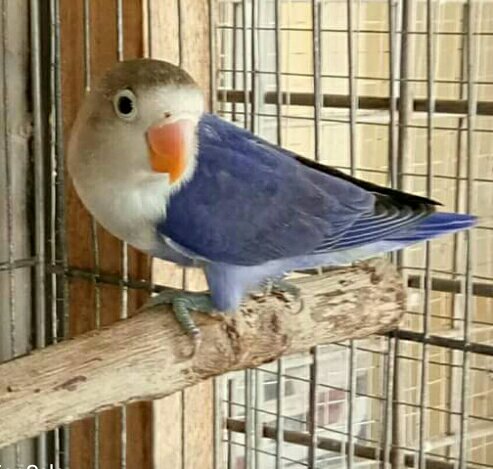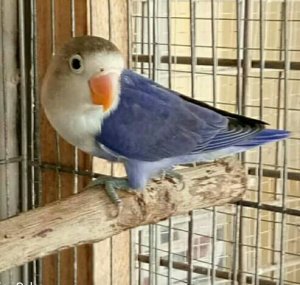Double factor violet fischer
Fischer’s lovebird(Agapornis Fischeri) – small species of parrot in the Agapornis genus. disscovered in late 19th century, and bred in united states in 1926. Named after explorer Gustav Fischer.
Most fischer lovebirds in the wild are green. Nowadays many different collor mutation are being bred by aviary breeders. This species of african lovebird is the most popular in aviculture. Because it can be bred in almost any fischer’s color mutation. Many new Color and mutation in this species had been introduced In the market.
The following are the different categories under fischer’species.
Normal fischer’s(madre) this mutation in fisheri has greyish color on its forehead down to its back collar, it was similar to a nun with veil on its head. It comes on many different collor mutations.
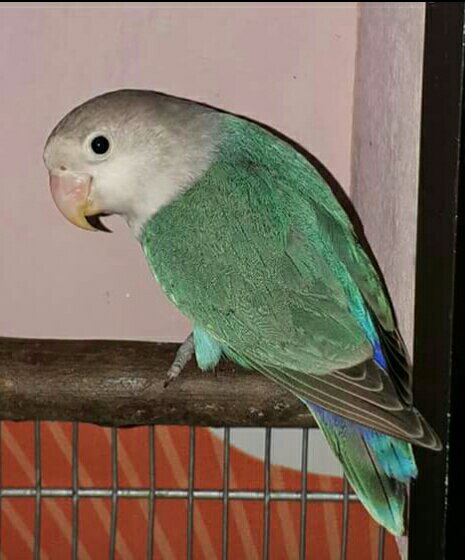
Sable – The phenotype is the reduction of melanin on the head only, leaving the remaining body colors unchanged. This is particularly attractive in the blue series birds. This mutation originated in brazil. Mr Paul Richard who showed the first sable and won the 1996 Brazilian Championship.
Sable head in fischeri varied in different color series in lovebird. In blue series birds the color of head is white from breast to back collar. In green series of bird, the head color is bright orange-red. While in Parblue mutation(partial blue) the head collor is from light yellow to bright yellow.

Pastel fischeri. This shows about 50% reduction on melanin, resulting to a light colored bird.
• In green series the body is light green with dirty orange forehead.

• In blue series the the color is lighter than normal color and has brown to light brown flight feathers.
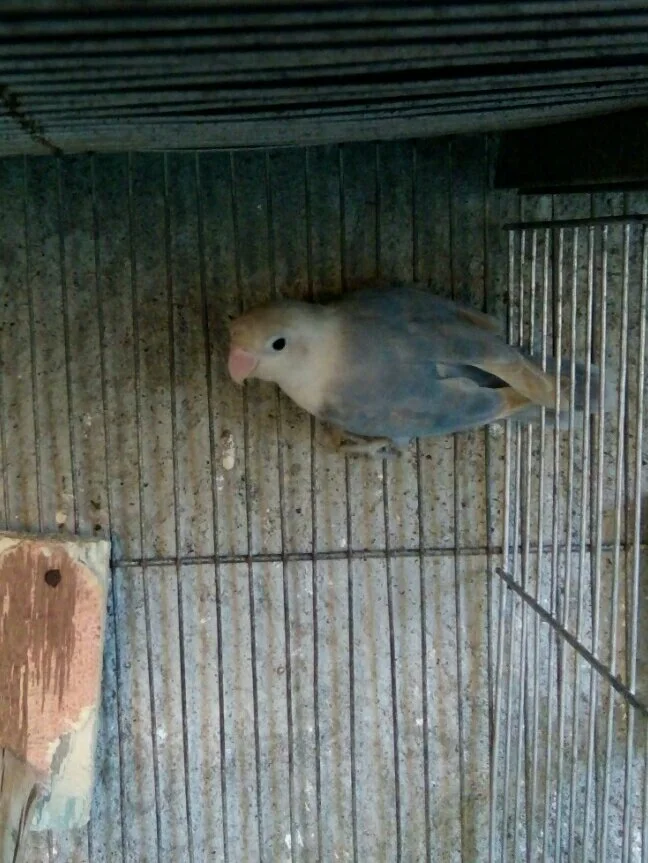
Non-sex linked INO (lutino) fischer. A yellow collored lovebird with a clear yellow body orange head mask and hood, has red beak, white rump, white ring around its eyes, eyes are red and flight feathers is white
It was originated in lillianae, and is a transmuted mutation via A personatus. It is an autosomal recessive mutation, it means that you need the gene in both parents to have visual offspring.
When this mutation is combined with blue, we get a white bird with red eyes also known as albino fischers.
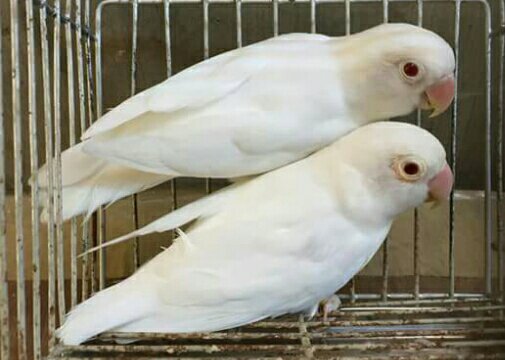
Dark eyed clear (DEC) fischers lovebird. This bird is yellow with about 90% reduction in melanin, the head masked and hood is bright orange, it has blue on its rump, grey feet, the eye color is black, red beak and white ring around its eye. When this bird is combined with blue bird, the result is a white bird with dark eyes.
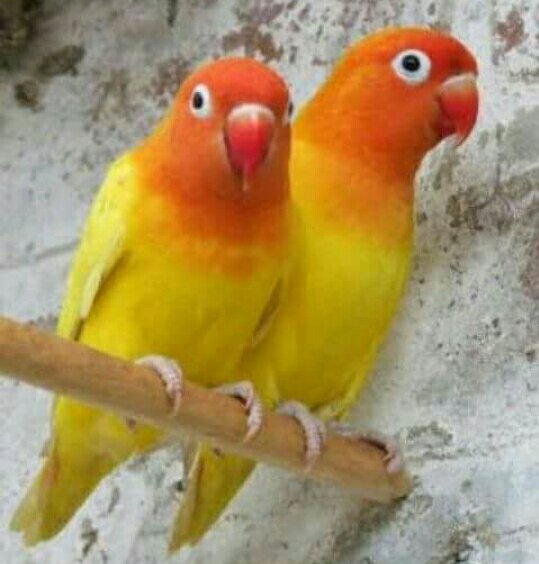
Dark factor fischeri- Dark factor is a dominant gene. Meaning you only need one bird with dark factor to produce dark factor baby. If you pair it with another dark factor bird, you will end up having a double dark factor baby.

• In green series lovebird dark factor is reffered as dark green. While the double dark factor is called olive.
• In blue series lovebird, single dark factor is reffered to us cobalt, and the double dark factor is called mauve.

Violet. This is also a dominant gene, you only need one bird with violet factor in order to produce violet bird. When violet is present in green series lovebird it is called violet-green. In blue series lovebird, a single violet factor is called violet, while double dark factor violet is called double factor violet or visual violet
The Pied mutation occurs in many species of birds. Cockatiels, Lovebirds, Budgies, ect.
It just means the bird has one colour in place of where the ‘normal’ colour should be. For example, in Cockatiels, a Pied bird means that where there is usually the normal grey colour, yellow appears. Ideally, the Pied markings on the bird should be symmetrical. Of course, this only matters in showing.

